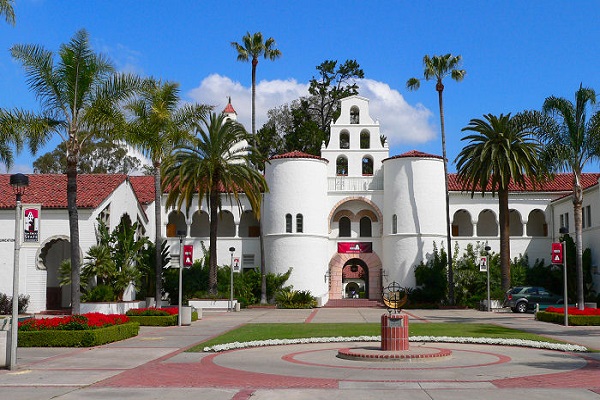San Diego State University Experts to Design Bacteria That Extract Rare Earth Elements
Rare earth elements (REEs) like lanthanum and neodymium are essential components of modern electronics, from cell phones and solar panels to satellites and electric vehicles. These heavy metals occur all around us, albeit in tiny quantities. But demand continues to rise and because they occur in such low concentrations, traditional methods of extracting REEs can be inefficient, environmentally polluting, and detrimental to the health of workers.
Now, with funding from the Defense Advanced Research Projects Agency (DARPA) Environmental Microbes as a BioEngineering Resource (EMBER) program, San Diego State University researchers are developing advanced extraction methods with the aim of boosting the domestic supply of REEs.
“We are trying to develop a new procedure for recovery which is environmentally friendly and more sustainable,” said biologist and principal investigator Marina Kalyuzhnaya.
To do this, the researchers will tap into the natural propensity of methane-consuming bacteria living in extreme conditions to capture REEs from the environment.
“They require rare earth elements to make one of the key enzymatic reactions in their metabolic pathways,” said Kalyuzhnaya.
REEs include the many lanthanide elements of the periodic table. In collaboration with the University of California, Berkeley and Pacific Northwest National Laboratory (PNNL), the SDSU researchers plan to reverse engineer the biological processes that allow the bacteria to harvest the metals from the environment. Understanding this process will inform the creation of synthetic designer proteins that bind with high specificity to different types of lanthanides, according to biochemist John Love. PNNL’s team will identify the genetic determinants of the extremophilic and REE accumulating bacteria, and then characterize their REE uptake.
The team will then modify the bacteria to produce the metal-binding proteins on the surface of their cells, said Love.
REEs are relatively abundant in mine tailings, the waste products of some metal ores, such as aluminum.
“Mine tailings are actually waste which still has a lot of useful materials in it,” said Kalyuzhnaya.
To purify and collect the REEs within, these slurries of water and crushed rocks will be run through a biofilter containing the modified bacteria, allowing the designer proteins on the surface of the bacteria to selectively bind to the REEs. Like the methane-loving bacteria that served as their templates, the improved bacteria will tolerate extremes of pH, temperature and salinity, conditions found in the mine tailings.
The researchers will collaborate with an industry partner, Palo Alto Research Center (PARC), a Xerox company, to bioprint a porous, sorbent material for use in the biofilter. This bioprinting technology is low-cost and scalable and is projected to result in significant savings when applied broadly to mineral recovery.
In addition to testing and optimizing the biofilter, the team will also have to develop methods for collecting the purified lanthanides from the biofilter itself, according to environmental engineer Christy Dykstra. The researchers have teamed up with a startup company, Phoenix Tailings, to test and refine the recovery process.
Because the goal is to develop a commercially viable but environmentally friendly process for extracting REEs, Dykstra and several of the project partners will analyze the costs of the system compared with other technologies for recovering lanthanides, but also the environmental impact.
“We do anticipate that it would have a lot of benefits environmentally and lower energy costs compared to what is currently used,” said Dykstra. “A system like this would be more of a passive biofiltration system, with less energy inputs. And then, theoretically, less use of really environmentally harmful solvents and things like that. A lot of current processes will use really harsh and non-environmentally friendly solvents.”
Dykstra also notes that since bacteria replicate themselves, microbe-based technologies are self-renewing, “whereas if we were to use a chemical method, we would have to continually produce more and more chemical.”
“Even if it will cost a little bit more, but it does not harm the environment, that would make sense,” said Kalyuzhnaya.
The goal of the DARPA-funded project is to provide proof-of-concept of the bio-driven REE-recovery technology in four years, which Kalyuzhnaya said will require a strategic vision and a cross-disciplinary outlook.
She added that the project will provide SDSU graduate students with the opportunity to participate in multidisciplinary research “and see how concepts can grow from just ideas all the way to pilot demonstration.”

